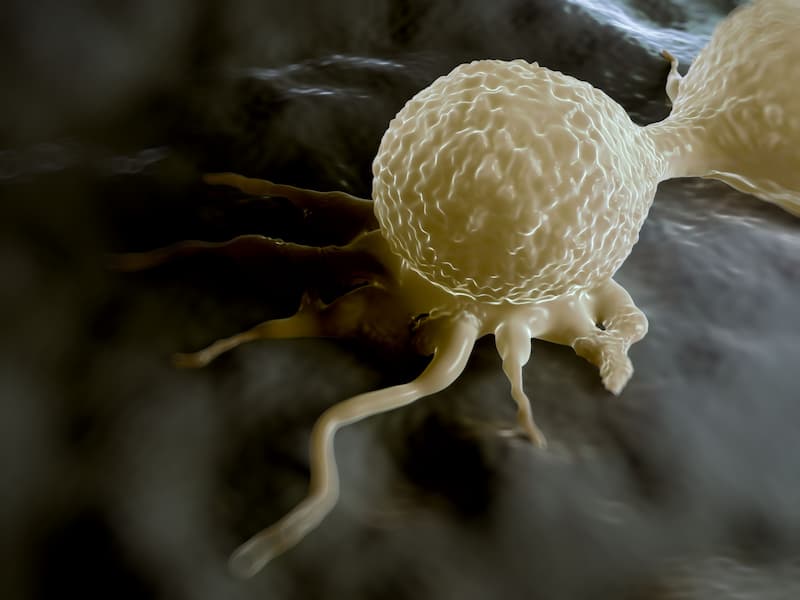Psilocybin Therapy in Cancer Yields Meaningful Improvement in Depression
Patients with curable metastatic cancer appear to have long-lasting improvements in depression symptoms 8 weeks after a single treatment with psilocybin therapy.
Treatment with psilocybin therapy resulted in clinically meaningful and long-lasting improvements in depression symptoms over 8 weeks following a single treatment of psilocybin therapy combined with group therapy support, according to data from a phase 2 study published in JAMA Oncology.
"Psychological distress is a big deal in in our patients’ lives, and it likely affects their quality of life as much as the physical symptoms; we largely don’t address [these challenges]," according to an expert from Adventist Health Care.

Results indicated that treatment with psilocybin resulted in a notable reduction from baseline to week 8 post-treatment in Montgomery-Asberg Depression Rating Scale (MADRS) score of 19.1 points (95% CI, –22.3 to –16.0; P <.001). Eighty percent of patients experienced a sustained response, and 50% of patients achieved full remission of depressive symptoms.
“Psychological distress is a big deal in in our patients’ lives, and it likely affects their quality of life as much as the physical symptoms; we largely don’t address [these challenges],” Manish Agrawal, MD, a medical oncologist at Adventist Health Care, said in an interview with CancerNetwork®. “Psychedelics are a potentially promising venue to address this. Patients deserve a serious inquiry by their oncologist to determine if the data are there and if it’s applicable.”
Manish explained that psilocybin affects the 5-HT2A receptor, which is part of the serotonin system. The treatment is thought to calm the brain’s default mode network—an active part of the brain that stays alert for danger—and allow other areas such as the temporal lobe and frontal lobe to be more active.
He also indicated that monitoring patients with cancer for symptoms of depression is something that the field could be doing a better job with.
“To be perfectly honest, as an oncologist, this is something that we don't do very well. Most clinics and practices are seeing patients and monitoring for [adverse] effects [AEs]. Some, but I wouldn't say many, have intakes where they are assessing people for distress,” he explained. “There is not a formal mechanism that's being implemented throughout cancer care. It [mainly] comes up when a patient mentions it, or when the physician or nurse notices the person might [have depression].”
The single-center, fixed-dose, open-label phase 2 study included a total of 30 patients who were recruited via the Aquilino Cancer Center and referrals from psychiatric/oncology services. Patients diagnosed with cancer and major depressive disorder were divided into cohorts of 3 to 4 individuals.
The patients received treatment with 25 mg of COMP360 in adjacent rooms that were accessible via a common space. Investigators noted that there was a 1:1 therapist to patient ratio. Moreover, group therapy was given in 1 preparation and 2 integration sessions further supplemented by individual therapy.
Outcome measures included safety and improvement in depression, with other measures of depression including MADRS score changes as well as Quick Inventory of Depressive Symptomatology–Self-Report and the Maudsley Visual Analogue Scale.
Investigators reported an attrition rate of 0%. Patients had a mean age of 56 years, and 70% were women. Moreover, 47% had curable cancer, and 53% had non-curable cancer. Half of the population reported having previously been treated with antidepressant agents.
In terms of safety, investigators did not observe any serious treatment-related AEs, including no suicidality based on Columbia Suicide Severity Rating Scale. Most AEs were mild, such as headache (n = 24), nausea (n = 12), altered mood (n = 8), anxiety (n = 7), and hallucinations (n = 1).
When asked which patients would be best suited to receive treatment with psilocybin, Manish highlighted a few exclusion criteria. Patients with a history of psychosis or schizophrenia, for example, should be excluded from receiving treatment. Moreover, those with uncontrolled diabetes and arrhythmias are also not suited to receive treatment.
Findings from the study were supported by patient-reported measured depression symptoms. Investigators observed a decrease in Quick Inventory of Depressive Symptomatology–Self-Report scores of 5.9 points (95% CI, –7.2 to –4.6) on average; this translated to a 48% reduction in depression symptoms from baseline to week 8. There was also a change of –46.2 points (95% CI, –61.6 to –30.7), in Maudsley Visual Analogue Scale assessments, equaling a 53% decrease in self-assessed depression sensitivity.
“As an oncologist, you carry the burden, and seeing the emotional distress that your patients are facing—the existential distress of having a diagnosis that could potentially lead to their death, or have a tremendous impact on their family—is going to change the course of their care,” Manish said.
Reference
Agrawal M, Emanuel E, Richards B, et al. Assessment of psilocybin therapy for patients with cancer and major depression disorder. JAMA Oncol. Published online April 13, 2023. doi:10.1001/jamaoncol.2023.0351